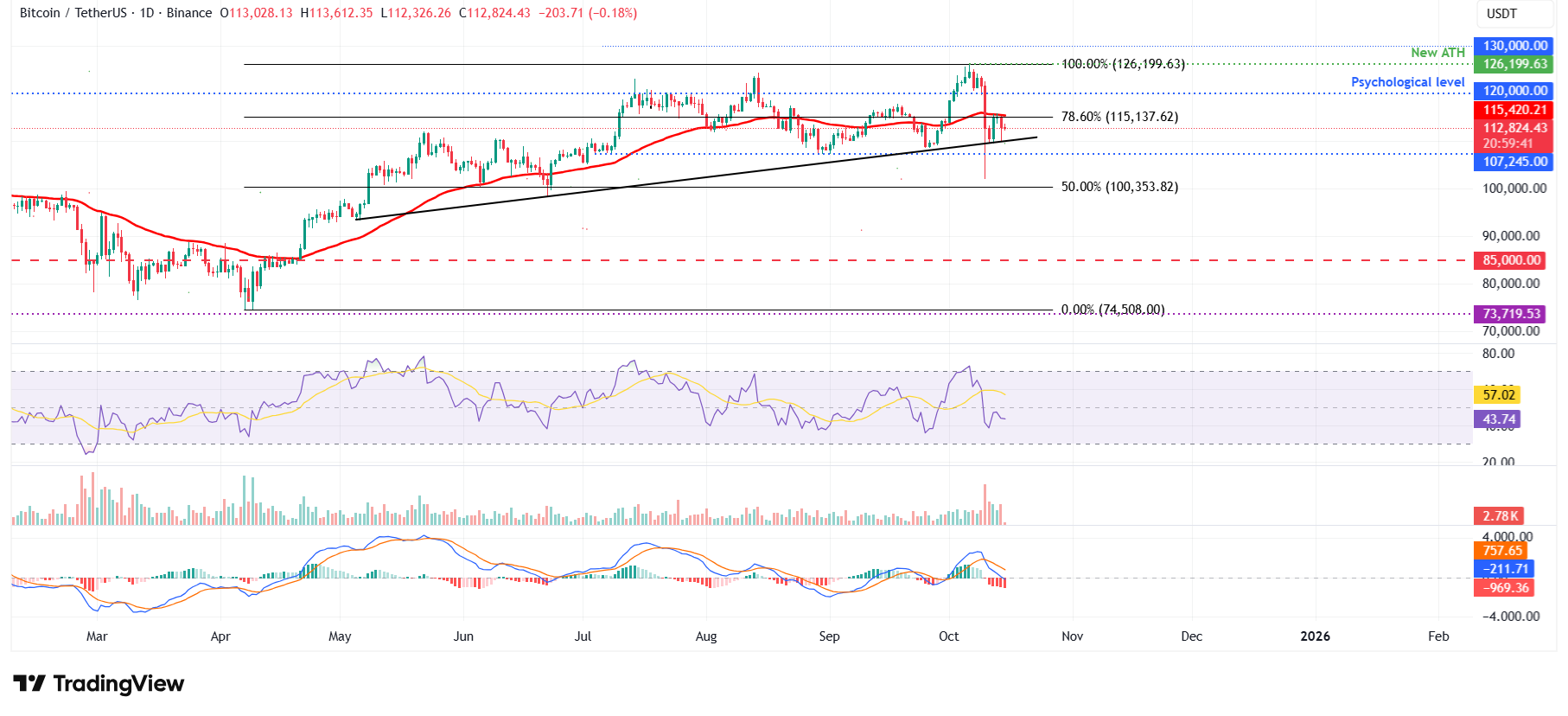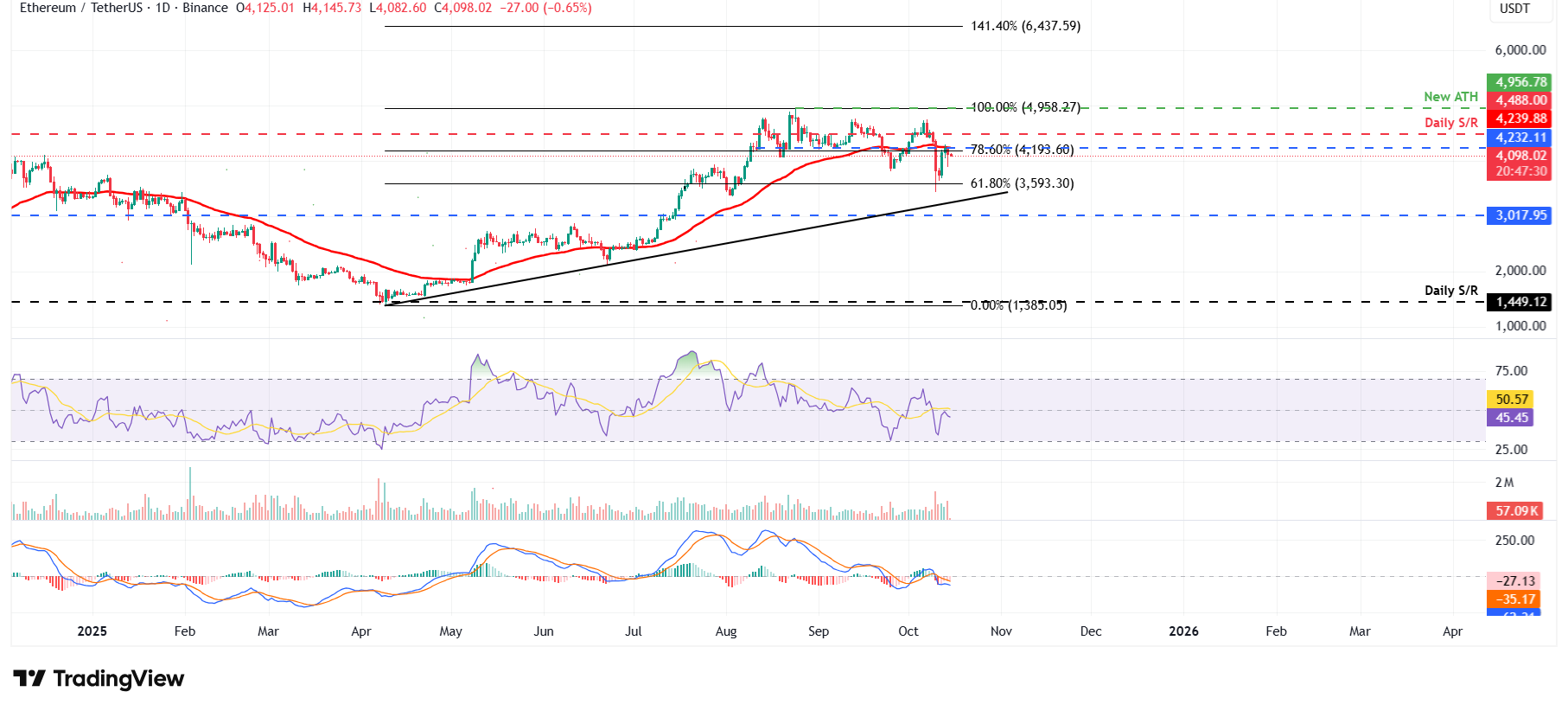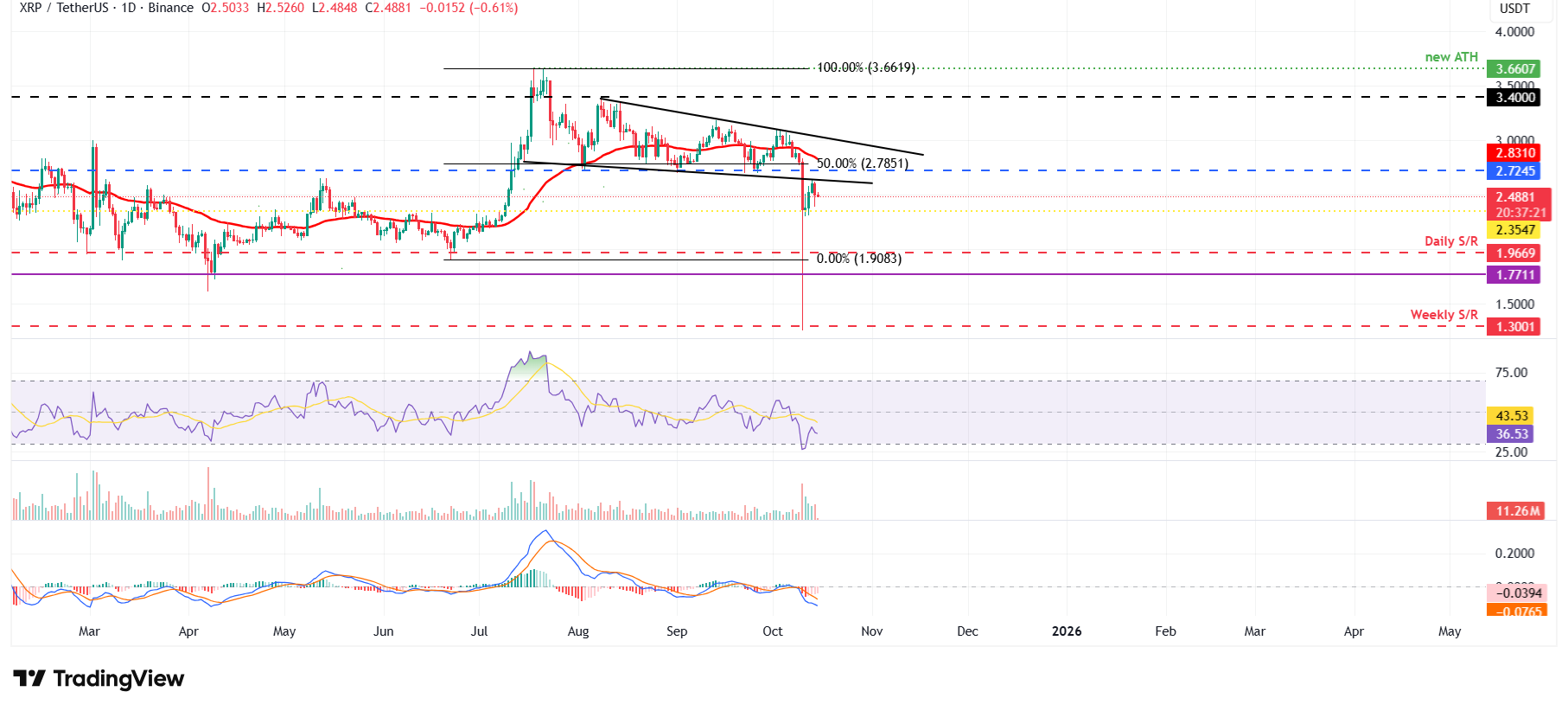Top 3 Price Prediction: Bitcoin, Ethereum, Ripple – BTC, ETH, and XRP pause recovery near key technical barriers
- Bitcoin price faces rejection from the 50-day EMA at $115,416, signaling weakness in its ongoing recovery.
- Ethereum price declined after retesting its daily resistance at $4,232, a close above suggests further recovery.
- XRP faces rejection from the lower trendline of a falling wedge pattern, indicating a potential correction in the near term.
Bitcoin (BTC), Ethereum (ETH) and Ripple (XRP) paused their recovery as these major cryptos faced resistance at key technical levels. The short-term sentiment remains mixed with traders closely watching whether the top three cryptocurrencies can sustain their recovery momentum or face renewed selling pressure near their respective technical barriers.
Bitcoin recovery pauses after retesting key resistance zone
Bitcoin price recovered slightly on Sunday, closed above $114,900 after a sharp fall on Friday. BTC continued its recovery on Monday and retested the 78.6% Fibonacci retracement level at $115,137 (drawn from the April low of $74,508 to the October 6 high of $126,199). This level roughly coincides with the 50-day Exponential Moving Average (EMA) at $115,420, making it a key resistance zone. On Tuesday, BTC declined by 1.86% after retesting the resistance zone, but found support around the ascending trendline. At the time of writing on Wednesday, it hovers around $112,800.
If BTC continues its correction, it could extend the decline toward the daily support level at $107,245.
The Relative Strength Index (RSI) reads 43 on the daily chart, which is below its neutral level of 50, indicating bearish momentum is gaining traction. Additionally, the Moving Average Convergence Divergence (MACD) showed a bearish crossover on Friday, which still holds, further supporting the bearish view.

BTC/USDT daily chart
On the other side, if BTC recovers, it could extend the recovery toward the 50-day EMA at $115,472.
Ethereum declines as it retests daily resistance at $4,232
Ethereum price found support around the 61.8% Fibonacci retracement level at $3,953 (drawn from the April low of $1,385 to the record high of $4,956) on Saturday and recovered by 13% in the next two days. On Tuesday, ETH declined slightly after falling below the daily resistance level at $4,232, which roughly coincides with the 50-day EMA and the 78.6% Fibonacci retracement level. At the time of writing on Wednesday, it hovers around $4,098.
If ETH continues its pullback, it could extend the decline toward the 61.8% Fibonacci retracement level at $3,953.
Like Bitcoin, Ethereum’s RSI and MACD indicators also support the bearish view.

ETH/USDT daily chart
However, if ETH breaks above the $4,232 level and finds support around it, the rally could extend toward the next daily resistance at $4,488.
XRP finds rejection from the lower trendline of a falling wedge pattern
Ripple price found support around the daily support level at $2.35 on Saturday and recovered over 10% in the next two days. On Tuesday, XRP declined after it found resistance around the lower trendline of a falling wedge pattern. At the time of writing on Wednesday, it hovers around $2.48.
If XRP continues its correction, it could extend the decline toward the daily support at $2.35.
Like Bitcoin and Ethereum, XRP’s momentum indicators, RSI and MACD, also support the bearish view.

XRP/USDT daily chart
On the other hand, if XRP recovers, it could extend the recovery toward the 50-day EMA at $2.83.
Cryptocurrency metrics FAQs
The developer or creator of each cryptocurrency decides on the total number of tokens that can be minted or issued. Only a certain number of these assets can be minted by mining, staking or other mechanisms. This is defined by the algorithm of the underlying blockchain technology. On the other hand, circulating supply can also be decreased via actions such as burning tokens, or mistakenly sending assets to addresses of other incompatible blockchains.
Market capitalization is the result of multiplying the circulating supply of a certain asset by the asset’s current market value.
Trading volume refers to the total number of tokens for a specific asset that has been transacted or exchanged between buyers and sellers within set trading hours, for example, 24 hours. It is used to gauge market sentiment, this metric combines all volumes on centralized exchanges and decentralized exchanges. Increasing trading volume often denotes the demand for a certain asset as more people are buying and selling the cryptocurrency.
Funding rates are a concept designed to encourage traders to take positions and ensure perpetual contract prices match spot markets. It defines a mechanism by exchanges to ensure that future prices and index prices periodic payments regularly converge. When the funding rate is positive, the price of the perpetual contract is higher than the mark price. This means traders who are bullish and have opened long positions pay traders who are in short positions. On the other hand, a negative funding rate means perpetual prices are below the mark price, and hence traders with short positions pay traders who have opened long positions.



